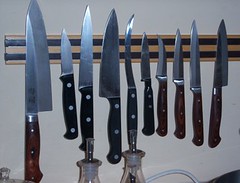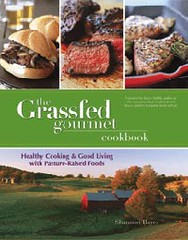Knives and Cutting Boards
Here are 13 tips when buying kitchen knives and cutting boards:
Kitchen Knives:
- You can get by in the kitchen with just 3 really good knives~ Chef, Serrated and Paring.
- Chef knife is usually 8 to 10 inches long.
- Serrated knife is for soft foods, cold cuts, bread and tomatoes.
- Paring knife is usually 3 to 4 inches long.
- Look for knives that will hold an edge - no knife can be "ever sharp".
- Bolster is what provides balance during use.
- A full tang means the blade goes all the way through to the end of the handle. Some knives have an enclosed handle and some have handles where you can see if the tang goes to the end or not.
- Professional sharpening is usually needed about once a year. The "sharpening steel" is not for sharpening, but to keep the edge on the knife. You should use the steel on your knives every time you get ready to use the knife.
Cutting Boards:
- Should be wood or plastic. Glass boards will ruin your knife edge. You want them sturdy and thick, not thin and flimsy.
- I use plastic for RAW MEAT, because they can go right into the dishwasher. I use wood for everything else, including cooked meat.
- What to look for in a wooden cutting board: Maple is the best for care and ease on your knives. Get one that is as big as you can afford. You really only need one, as it will last a lifetime with proper care.
- Features to look for include a carving well, juice trough and finger wells.
- Be sure to use food safe mineral oil on the wood when it looks thirsty to keep it from splitting or cracking. Never put it in the dishwasher. Hand wash with soap and water then dry immediately.
3:32 PM
|
Categories:
admin
|




